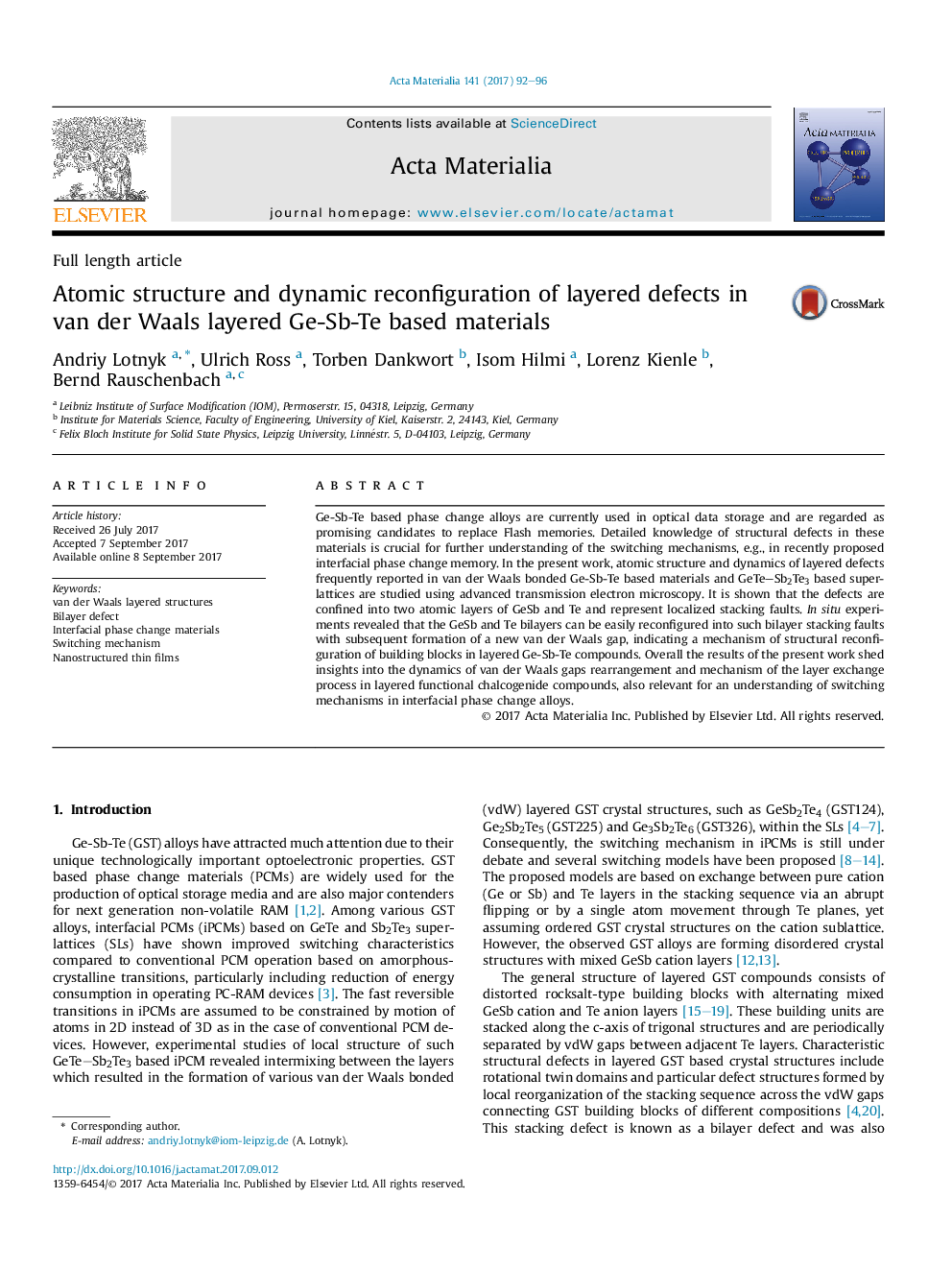| Article ID | Journal | Published Year | Pages | File Type |
|---|---|---|---|---|
| 5435721 | Acta Materialia | 2017 | 5 Pages |
Ge-Sb-Te based phase change alloys are currently used in optical data storage and are regarded as promising candidates to replace Flash memories. Detailed knowledge of structural defects in these materials is crucial for further understanding of the switching mechanisms, e.g., in recently proposed interfacial phase change memory. In the present work, atomic structure and dynamics of layered defects frequently reported in van der Waals bonded Ge-Sb-Te based materials and GeTeSb2Te3 based superlattices are studied using advanced transmission electron microscopy. It is shown that the defects are confined into two atomic layers of GeSb and Te and represent localized stacking faults. In situ experiments revealed that the GeSb and Te bilayers can be easily reconfigured into such bilayer stacking faults with subsequent formation of a new van der Waals gap, indicating a mechanism of structural reconfiguration of building blocks in layered Ge-Sb-Te compounds. Overall the results of the present work shed insights into the dynamics of van der Waals gaps rearrangement and mechanism of the layer exchange process in layered functional chalcogenide compounds, also relevant for an understanding of switching mechanisms in interfacial phase change alloys.
Graphical abstractVan der Waals gaps in layered Ge-Sb-Te structures reconfigure via rearrangement of GeSb and Te atomic layers.Download high-res image (376KB)Download full-size image
